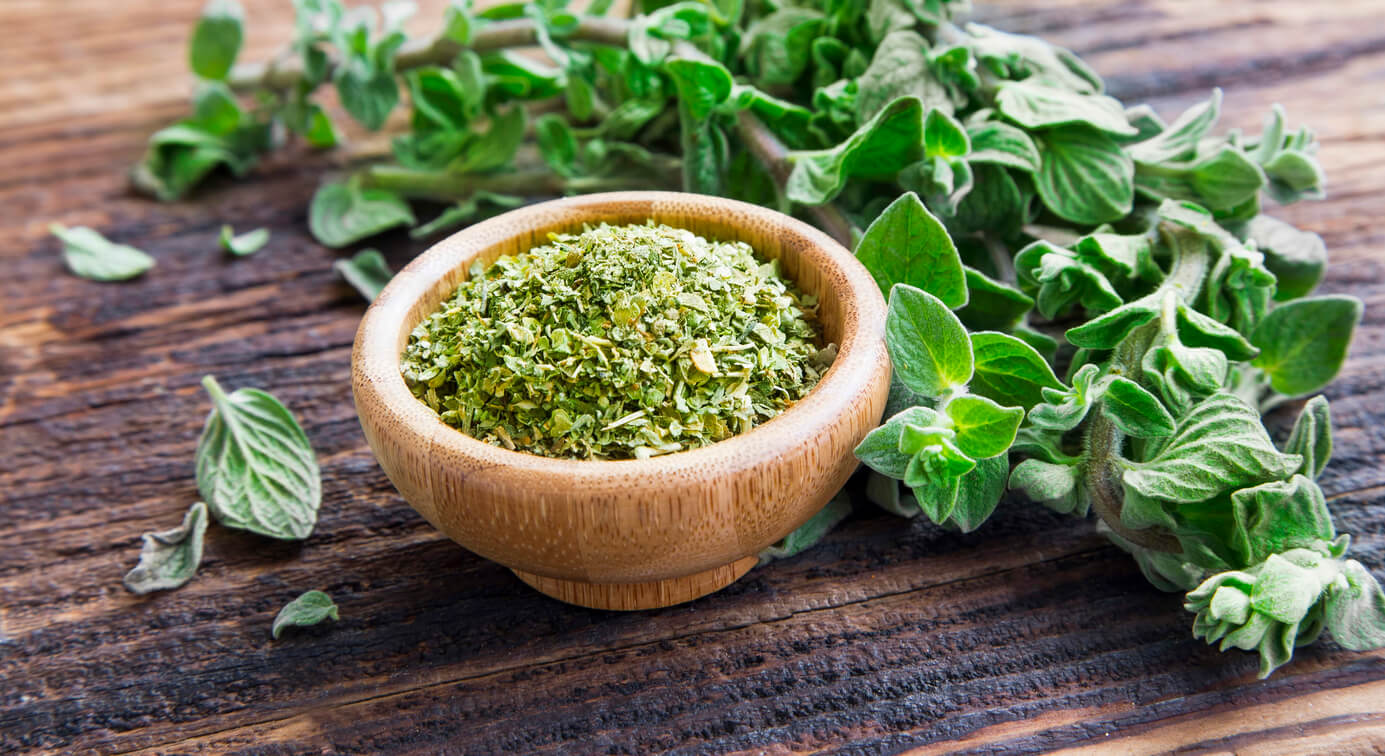
I just learned a new word: xenohormesis.
No, it’s not a 1990s sci-fi TV show, or a warrior princess’s evil twin brother.
Instead, it’s the idea that we can gain health benefits by consuming the protective compounds plants create when they are under stress. That is, when we consume those substances, we’re “borrowing” the plants’ survival signals and broadcasting them to our bodies.
It’s a theory, not a fact, but it does provide an intriguing answer to a puzzling question: Why are strongly flavored plants so often so darn good for us?
Like herbs and spices, they pack such a taste punch that we can’t consume them as food, but use them sparingly to provide zing and interest to some of our favorite dishes. And those same condiments, including turmeric, paprika, black pepper, ginger, cinnamon, and many others, are among the most anti-inflammatory foods we can eat.
Why is this a big deal? Because chronic inflammation is at the root of some of our most common and serious diseases, including heart disease, diabetes, arthritis, and even some cancers.
In this article, we’ll explore what inflammation is and why it can be such a problem. We’ll also discover a bunch of herbs and spices that naturally counter inflammation, reduce disease risk, and support overall well-being.
Spoiler alert: incorporating anti-inflammatory herbs and spices into your diet can be a flavorful and powerful step toward better health.
What Is Inflammation?

Speaking of flavors, there are two different “flavors” of inflammation: acute and chronic. Technically, they’re the same process, but they have very different impacts on your body and your health.
Acute inflammation is your body’s immediate and short-term response to injury or infection. Think about what happens when someone sprains their ankle. The joint hurts, swells, turns red (indicating lots of blood flow), gets hot, and becomes immobilized to prevent further injury.
This type of inflammation is protective and resolves once the underlying issue heals.
Chronic inflammation, on the other hand, is a slow, long-term response that can persist for months or even years. It may be caused by ongoing infections, autoimmune disorders, prolonged exposure to irritants (like air pollution or industrial chemicals), or sustained lifestyle factors such as poor diet, ongoing stress, and physical inactivity.
Unlike acute inflammation, chronic inflammation can damage healthy tissues and is linked to a wide range of diseases, including heart disease, type 2 diabetes, cancer, and Alzheimer’s.
Food as Medicine: Anti-Inflammatory Potential of Herbs and Spices
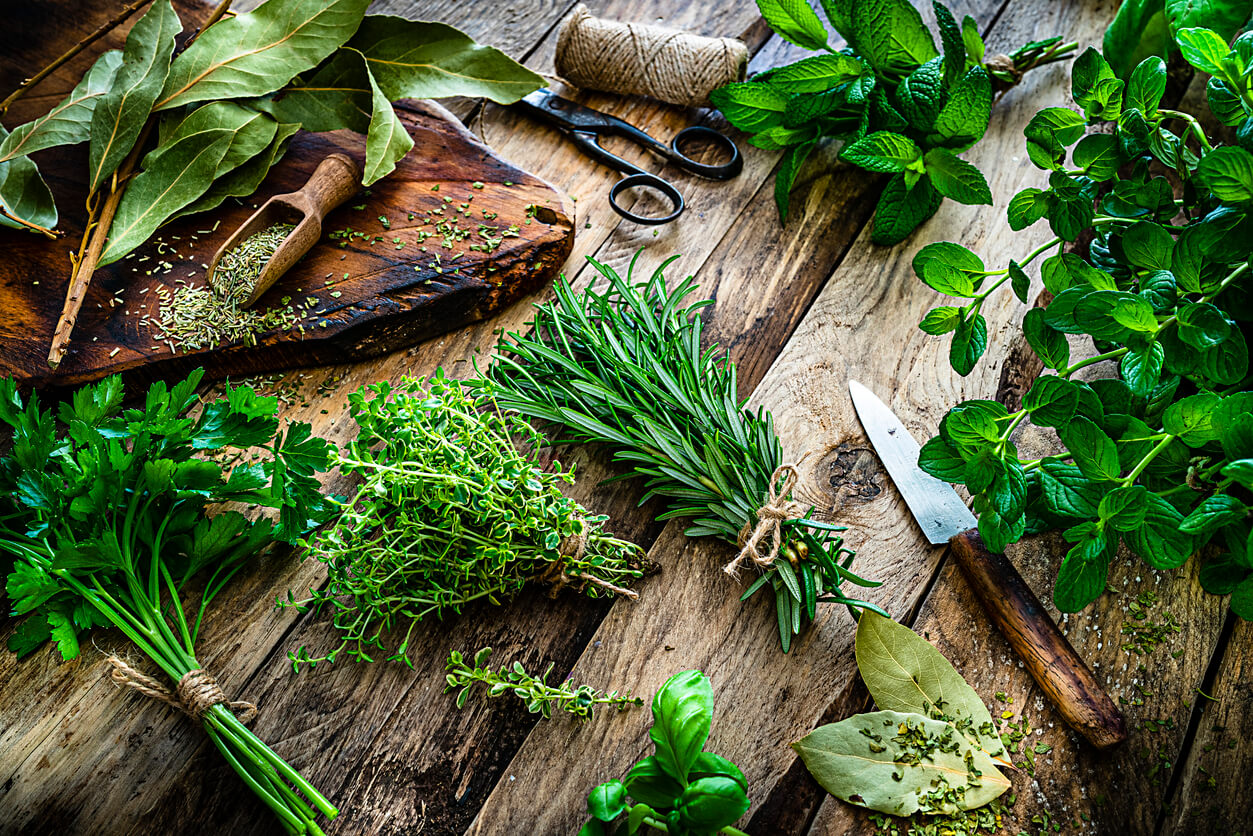
So inflammation is double-edged, both a vital defense mechanism and, when uncontrolled, a driver of disease. We don’t want to stop all inflammation, but moderate it when it no longer helps protect us from harm.
Fortunately, there are a bunch of compounds found in food that can help balance out inflammatory pathways. Components such as long-chain omega-3 fatty acids, vitamin E, plant flavonoids, prebiotics, and probiotics can all reduce inflammation.
They do this via a variety of mechanisms, including affecting gene expression, cell signaling, and oxidant production. They also keep the barrier between your gut and your blood supply in good working order.
Herbs and spices, in particular, are rich sources of bioactive compounds with anti-inflammatory and antioxidant properties. These include polyphenols, flavonoids, and other phytochemicals, known for neutralizing free radicals, keeping immune responses in the “healthy” range, and reducing oxidative stress — all of which can reduce chronic inflammation.
It’s great news that herbs and spices, which food lovers all around the world prize for the flavor they impart, are so good for us. But perhaps even better news is that they may act synergistically, meaning their effects when combined are greater than the sum of their components. So when you eat a curry made with red pepper, black pepper, ginger, and turmeric, for example, you get a “total is greater than the sum of its parts” effect with bioavailability, metabolic activation, and overall function of those anti-inflammatory compounds.
Spotlight on Healing Herbs and Spices
The hardest part of writing this article has been choosing which herbs and spices to include and which to leave out. Because just about every one seems to have powerful health properties, and they all have a culinary place in my heart.
So, with apologies to all the wonderful herbs and spices that do not appear below, let’s get into 11 of the most anti-inflammatory and flavorful additions to your cooking.
1. Turmeric
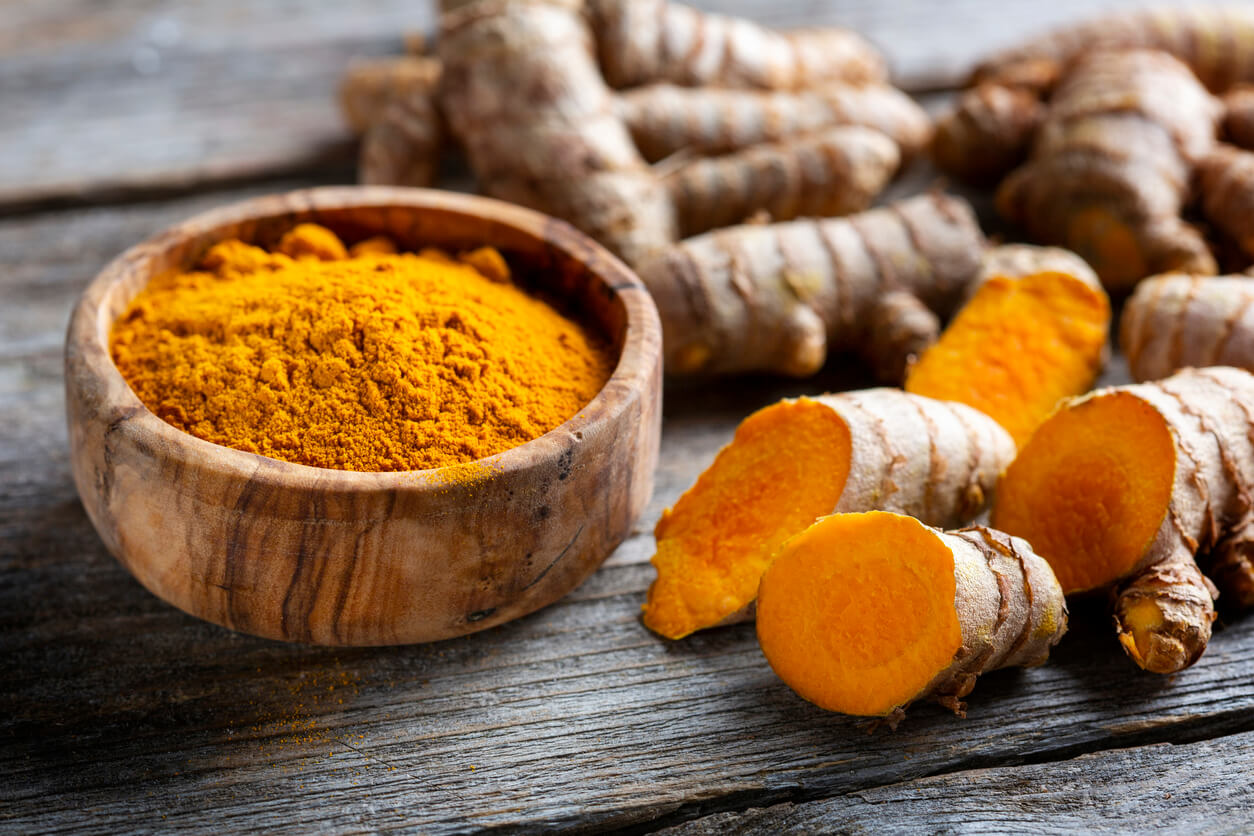
Turmeric (Curcuma longa), the golden spice, isn’t just for adding a vibrant hue to your dishes. Its secret weapon is a compound called curcumin. Along with its buddies, the curcuminoids and turmerones (is this starting to sound like a lineup of Motown groups?), curcumin works to reduce inflammation and boost your body’s defenses.
Turmeric Tips
- Add ground turmeric to soups, golden milk, curries, or roasted cauliflower
- Best absorbed with black pepper (piperine) and healthy fats
We wrote a whole article about turmeric. You can check it out here.
2. Ginger

Ginger (Zingiber officinale) powder retains the powerful anti-inflammatory properties of the fresh root, thanks to its concentrated gingerols, abundant shogaols, and complementary compounds like zingerone and paradols. (Is it just me, or do these sound like creatures you might meet at a cantina in a Star Wars movie?) They work by inhibiting inflammatory enzymes and signaling pathways, basically telling your cells to “calm down and carry on.” Ginger also turns out to be incredibly helpful in stopping migraines.
Ginger Tip
Use ground ginger in teas, stir-fries, or smoothies
Learn more about the science-backed benefits of ginger and how to enjoy it in your meals in this article.
3. Cinnamon
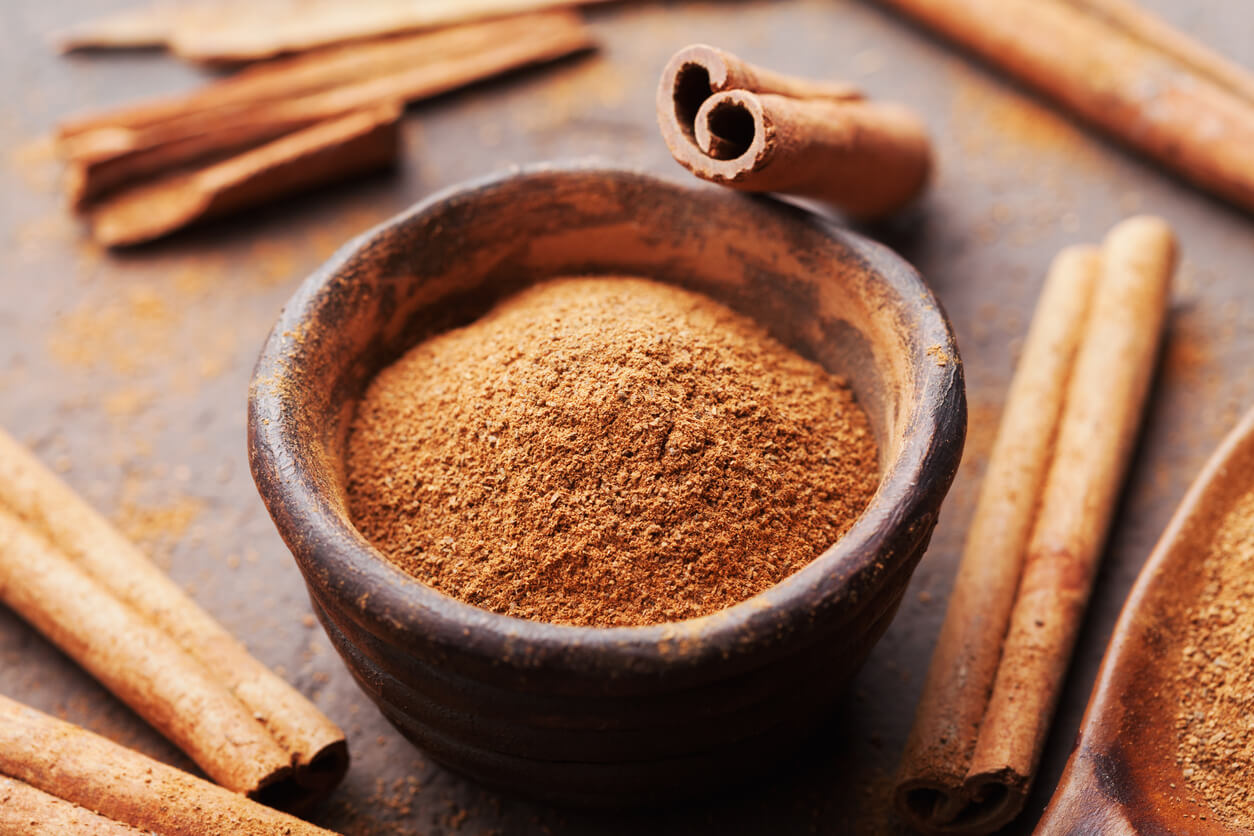
This warm and comforting spice isn’t just about Halloween and spiced lattes. Its anti-inflammatory superpower comes mainly from trans-cinnamaldehyde, whose sidekicks include cinnamic acid, p-cymene, cinnamyl alcohol, and other amazing polyphenols. The team works to keep your cells calm and content.
Ceylon (“true” cinnamon) vs. Cassia
When choosing cinnamon, it’s helpful to know there are two main types: cassia and Ceylon. While both provide health benefits, cassia cinnamon (Cinnamomum cassia), which is more commonly found, contains higher levels of a compound called coumarin.
In larger amounts, coumarin can be a concern for liver health, especially for those who consume cinnamon frequently or in significant quantities.
Ceylon cinnamon (Cinnamomum verum), whose Latin name means “true cinnamon,” has much lower levels of coumarin, making it a preferable choice for regular use.
Beyond this distinction, cinnamon, particularly Ceylon, is celebrated for its wide array of health advantages beyond controlling inflammation, including supporting healthy blood sugar levels and heart health, and providing antioxidant, digestive, and cognitive benefits.
Cinnamon Tip
- Stir into oatmeal, coffee, or baked goods
Want to dive deeper into cinnamon’s health effects and the differences between cassia and Ceylon? This article explores the full story.
4. Cloves
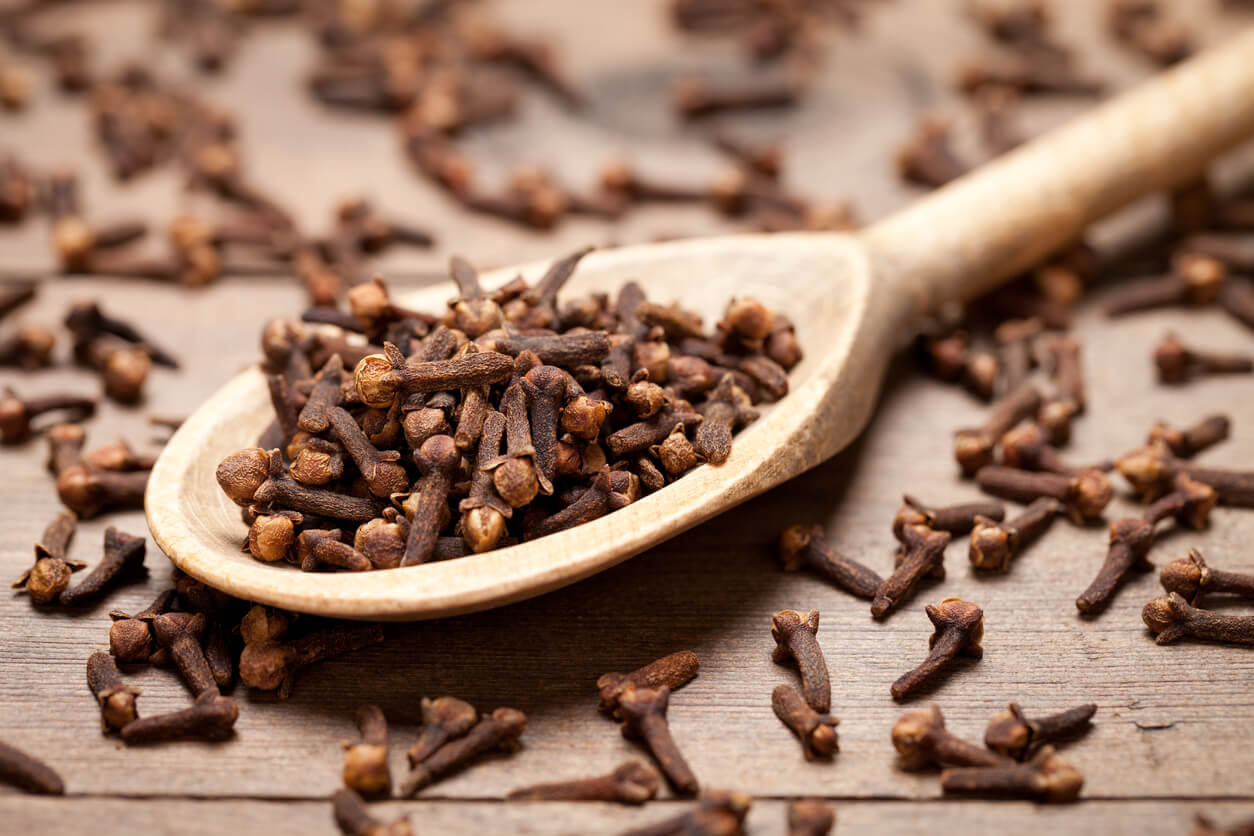
Cloves’ (Syzygium aromaticum) star player is eugenol, but a fantastic team of compounds like β-caryophyllene, α-humulene, flavonoids, and phenolic acids backs it up. Together, they form a powerful defense, working to calm inflammatory enzymes, balance immune responses, and provide robust antioxidant protection.
Clove Tips
- Infuse in teas or mulled beverages
- Use ground cloves in baking (e.g., pumpkin pie, spice cakes)
- Add whole cloves to stews or rice for depth
- Use in moderation, since high doses of eugenol can be irritating (and even a bit psychoactive, in a sedating kind of way)
5. Sweet Paprika
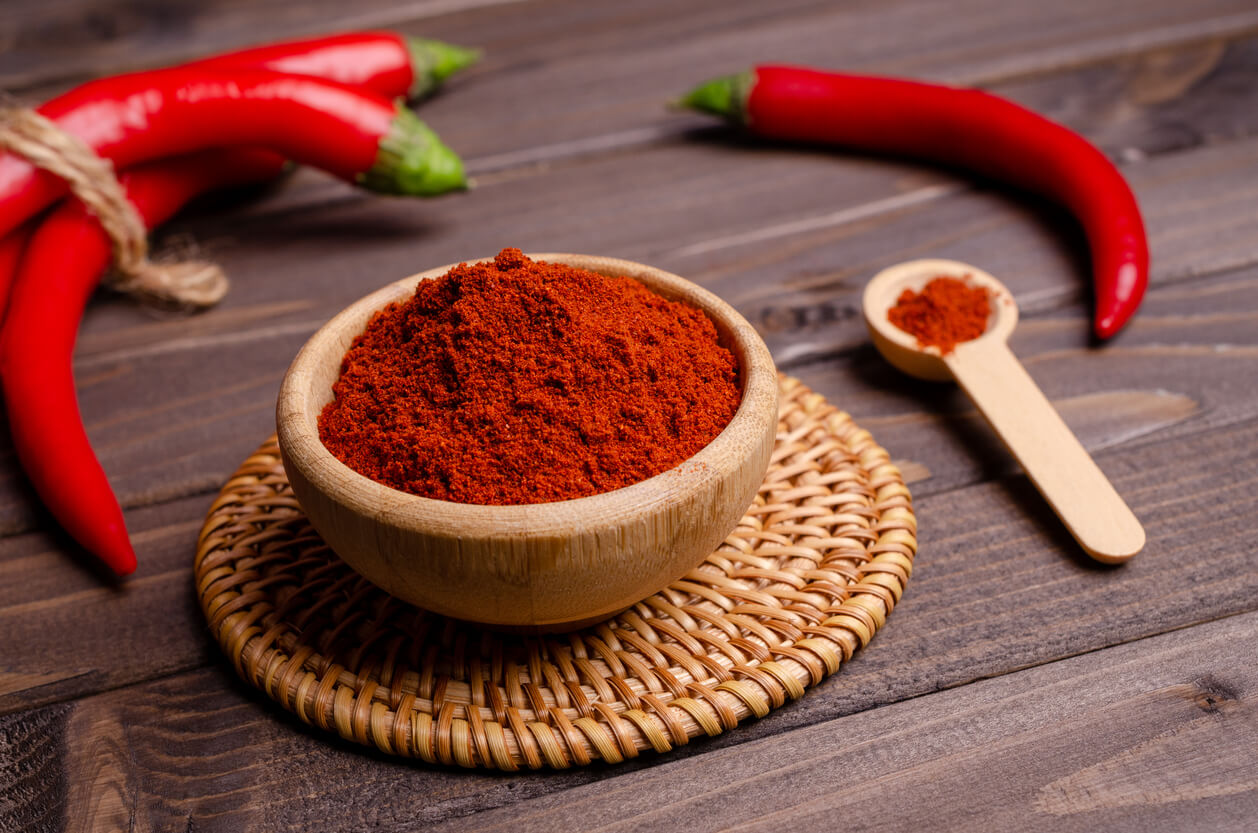
Sweet paprika (Capsicum annuum L.), made from ground sweet red peppers, is a gentle but effective anti-inflammatory spice, thanks to its high antioxidant levels. It’s a fantastic addition to a healthy, anti-inflammatory diet, especially if you enjoy the flavor of red peppers but prefer to skip the heat.
This vibrant spice is packed with beneficial red and orange carotenoids, including capsanthin, beta-carotene, and zeaxanthin. These powerful antioxidants help fight off harmful free radicals in your body, promoting healthier blood vessels and overall metabolic well-being.
Sweet Paprika Tips
- Use dried paprika in stews, soups, roasted potatoes, or grain bowls
- Adds rich color and mild sweetness to spice blends and rubs
- Great in bean dishes, lentils, and Spanish or Hungarian recipes
- Carotenoids are fat-soluble, so your body will absorb them better when accompanied by healthy fats
6. Black Pepper
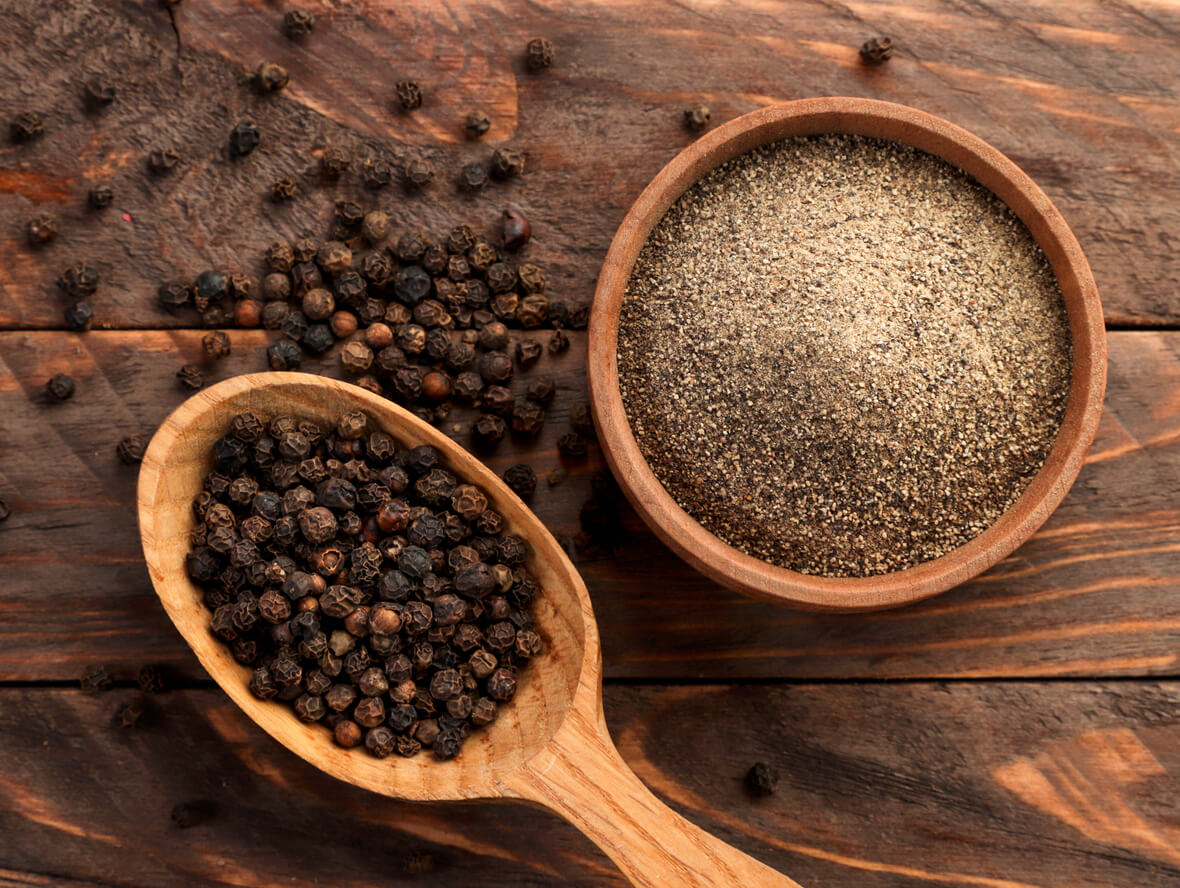
Black pepper (Piper nigrum) might seem like a run-of-the-mill spice, sitting there in a little dispenser on just about every restaurant table in the world. But first impressions can deceive. The health benefits of black pepper are significant, since it contains several bioactive compounds with anti-inflammatory effects.
The compound piperine is responsible for pepper’s heat, as well as many of its benefits. Beta-caryophyllene acts as a cannabinoid receptor 2 (CB2) agonist, reducing inflammation.
Rounding out Team Black Pepper are the minor volatile compounds limonene, pinene, and sabinene, along with some potent flavonoids and polyphenols.
Oh, and black pepper adds a bonus boost when combined with turmeric. Turns out that black pepper enhances the bioavailability of curcumin (the key anti-inflammatory compound in turmeric) by inhibiting certain enzymes in the gut and liver that would otherwise break curcumin down too quickly. This allows more of the good stuff to enter the bloodstream and exert its anti-inflammatory and antioxidant effects.
Black Pepper Tips
- Use freshly ground for the best flavor and potency
- Add to smoothies with turmeric and fat (like coconut milk) for a golden milk effect
- Sprinkle on salads, soups, or avocado toast
- Add at the end of cooking to preserve volatile oils
7. Fenugreek

Don’t underestimate fenugreek (Trigonella foenum-graecum) seeds just because they’re mild and tiny! They’re loaded with anti-inflammatory compounds, including diosgenin, flavonoids (like quercetin and vitexin), and a whole host of alkaloids and polyphenols.
Fenugreek Tips
- Add ground fenugreek to spice blends like curry powder
- Steep seeds in hot water for a digestive tea
- Soak seeds overnight or lightly toast before grinding for better digestibility and reduced bitterness
8. Thyme
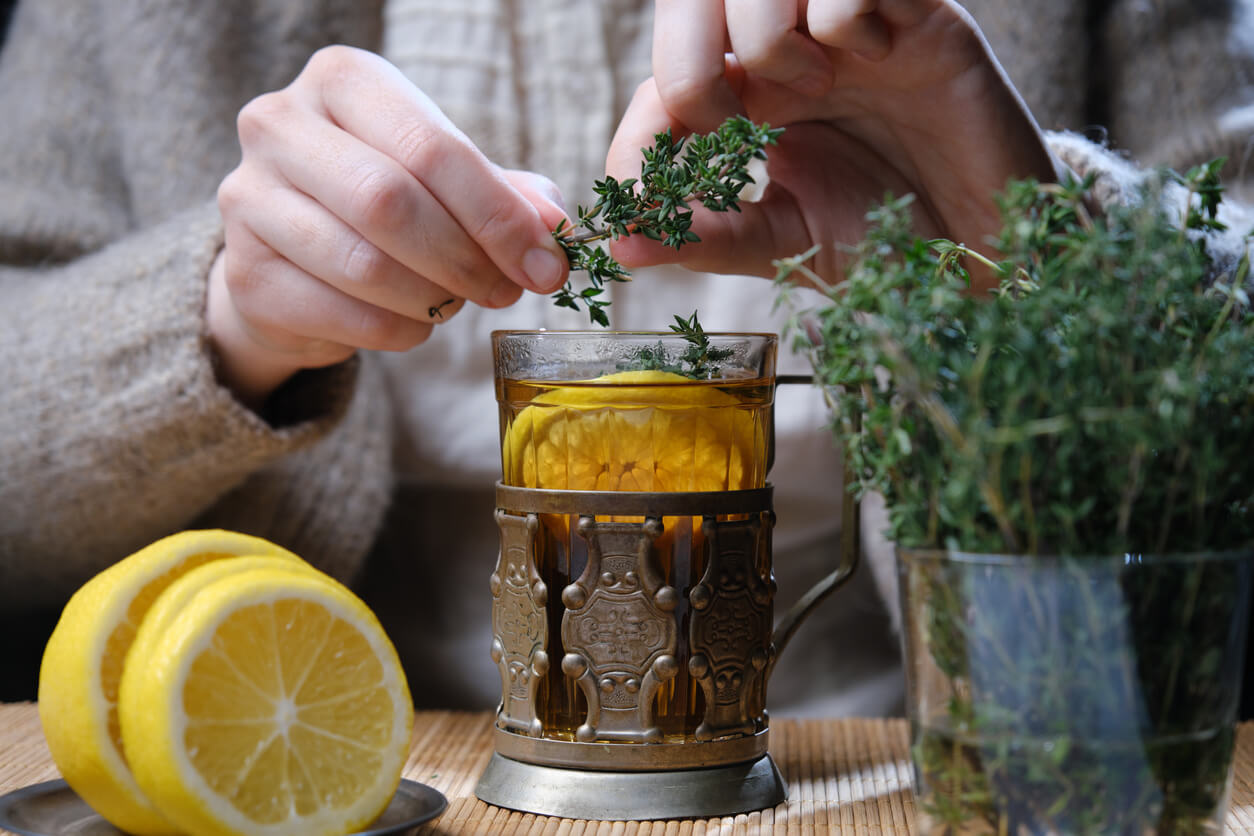
Thyme’s (Thymus vulgaris) anti-inflammatory action comes from a bunch of flavorful and aromatic compounds, including carvacrol, rosmarinic acid, luteolin, and apigenin (which would be good names for medieval stringed instruments, in my humble opinion). These compounds inhibit key pro-inflammatory enzymes and signaling pathways, helping combat inflammation both locally and throughout the body.
Thyme Tips
- Use fresh or dried in soups, roasted vegetables, stews, and marinades
- Pairs well with lemon, garlic, and olive oil
- Infuse into teas for respiratory benefits
- Thymol and other volatile oils are fat-soluble, so pairing thyme with healthy fats may enhance absorption
9. Oregano
Oregano (Origanum vulgare) shares some of thyme’s anti-inflammatory compounds, including carvacrol, rosmarinic acid, luteolin, and apigenin. It also contains thymol and ursolic acid. Together, they act to reduce cytokine production, turn down the activity of pro-inflammatory enzymes, and neutralize oxidative stress. Is oregano a culinary herb or a medicinal agent? Turns out, both!
Oregano Tips
- Sprinkle dried oregano on salads, pasta, roasted veggies, or pizza
- Use in tomato sauces, soups, and Mediterranean-style dressings
- Oregano’s fat-soluble compounds are better absorbed when consumed with healthy fats
Want more on oregano? You can explore the full story on its healing potential here.
10. Sumac
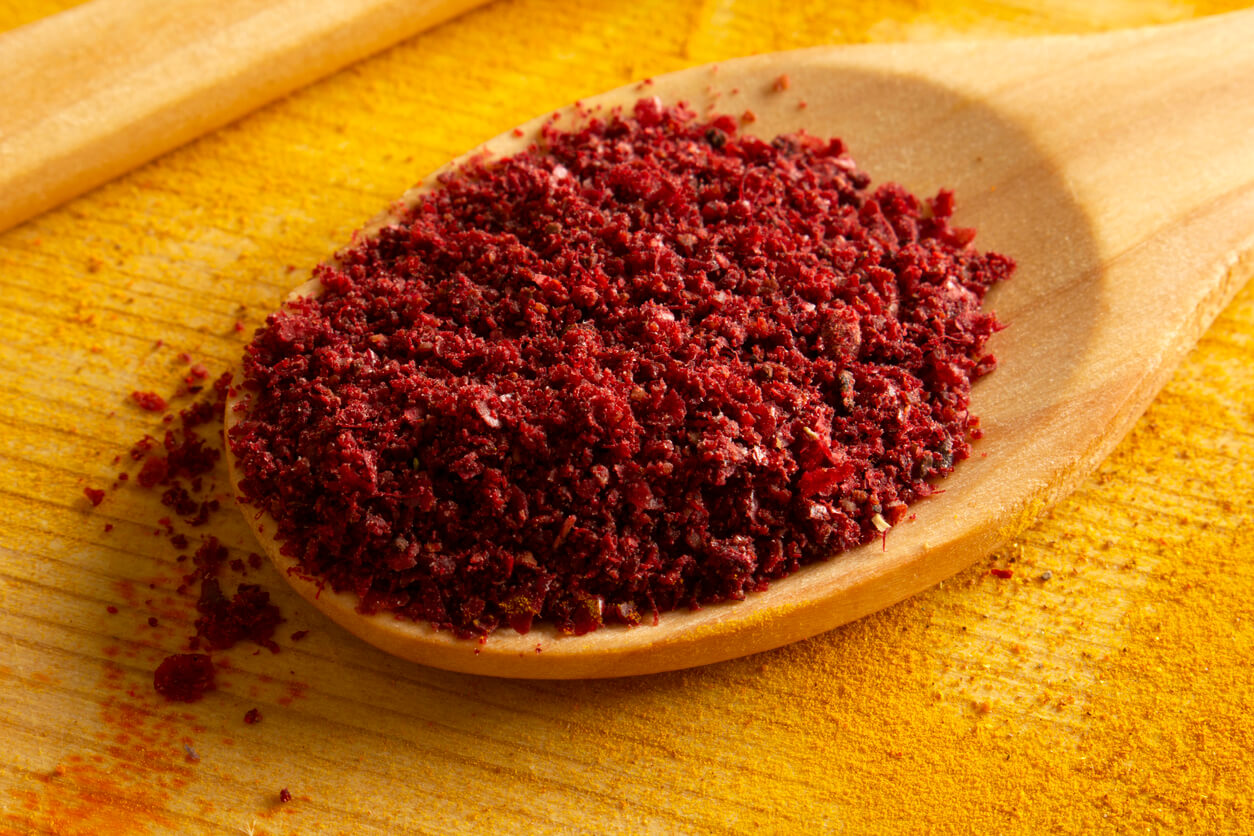
Sumac (Rhus coriaria L. (Anacardiaceae)) is a spice that’s popular in several Mediterranean cuisines. Its anti-inflammatory activity is primarily due to polyphenols such as gallic acid and tannins, flavonoids like quercetin and kaempferol, and assorted anthocyanins.
These compounds help inhibit key inflammatory pathways and reduce oxidative stress, making sumac both a flavorful and functional spice.
Sumac Tips
- Sprinkle dried sumac on hummus, roasted vegetables, or grilled meats
- Mix into vinaigrettes or use in spice blends like za’atar
- It’s bright, tart flavor pairs well with lemon and fresh herbs
- Combining with vitamin C-rich foods may enhance antioxidant synergy
11. Spice Blends
OK, so I cheated. Number 11 isn’t a spice, but an entire table of spice blends. That way, I can bestow anti-inflammatory awards on a couple of dozen more herbs and spices.
Spice blends are mixtures of herbs, spices, and sometimes seeds or salts, crafted to create rich, layered flavors in global cuisines. Beyond their culinary appeal, these blends often combine multiple anti-inflammatory and antioxidant-rich ingredients, offering synergistic health benefits greater than individual components. Make blends yourself or buy them ready-made.
| Spice Blend | Region | Main Ingredients |
| Garam Masala | India | Cumin, coriander, cardamom, cloves, cinnamon |
| Ras el Hanout | North Africa | Cinnamon, cumin, coriander, rose petals |
| Chinese Five Spice | China | Star anise, cloves, cinnamon, Sichuan peppercorns |
| Herbes de Provence | France | Thyme, rosemary, oregano, lavender |
| Za’atar | Middle East | Thyme, oregano, sumac, sesame seeds |
| Cajun Seasoning | Southern US | Paprika, garlic, cayenne, oregano |
| Chili Powder | US/Mexico | Chili, cumin, garlic, oregano |
| Berbere | Ethiopia | Chili, garlic, ginger, fenugreek |
| Advieh | Iran | Cinnamon, rose petals, cardamom, turmeric |
| Dukkah | Egypt | Nuts, sesame seeds, coriander, cumin |
| Italian Seasoning | Italy | Oregano, basil, rosemary, thyme |
| Taco Seasoning | Mexico | Chili powder, cumin, paprika |
| Curry Powder | Britain | Turmeric, coriander, cumin, chili |
Have You Tried Herbes de Provence?
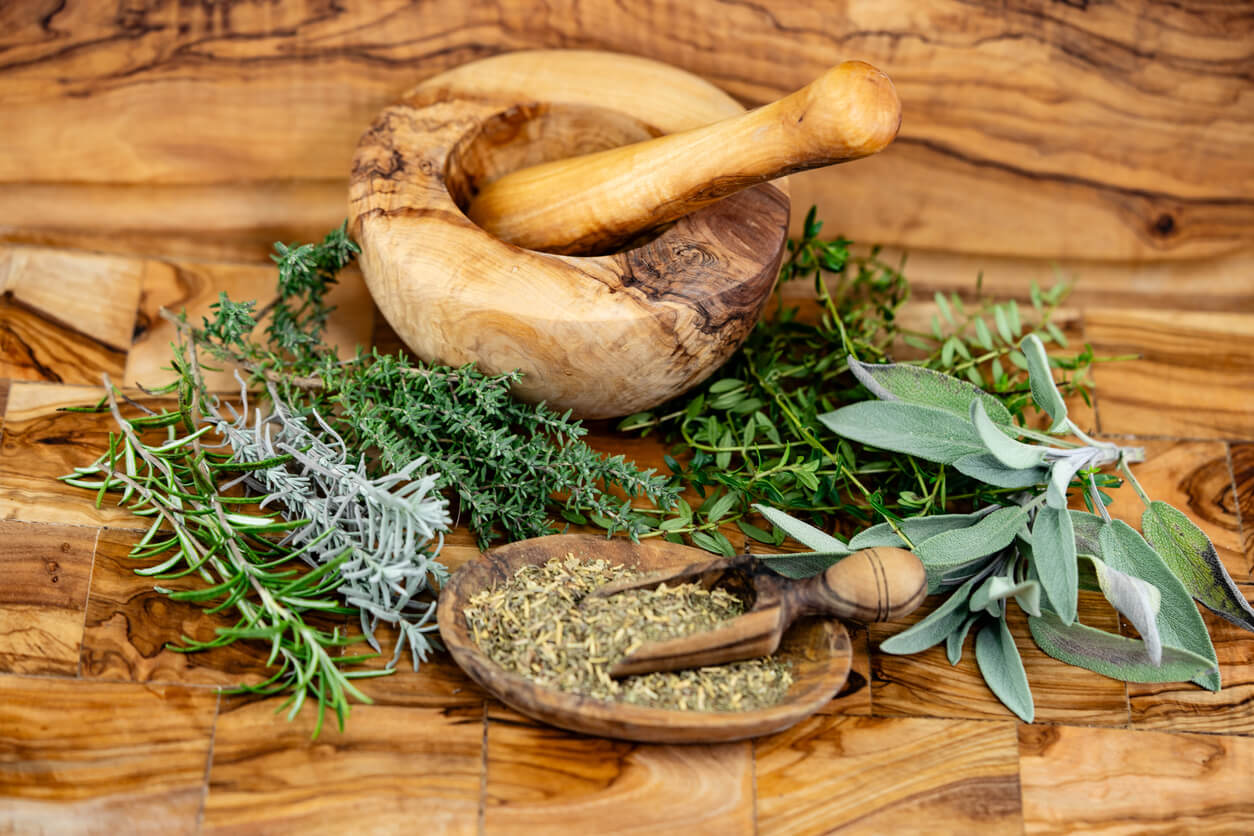
I don’t play favorites with my herbs and spices, but…
Herbes de Provence is a fragrant, savory blend of dried herbs traditionally used in southern French cuisine, typically including thyme, rosemary, oregano, basil, marjoram, and sometimes lavender. This aromatic mix brings a rich, earthy flavor to dishes like roasted vegetables, stews, and soups, elevating them with its complex, Mediterranean essence.
Beyond its culinary charm, Herbes de Provence offers anti-inflammatory benefits, thanks to its ingredients — many of which, like thyme and oregano, contain natural compounds that help reduce inflammation and support overall wellness. It’s a delicious and health-supportive addition to any kitchen.
The Takeaway
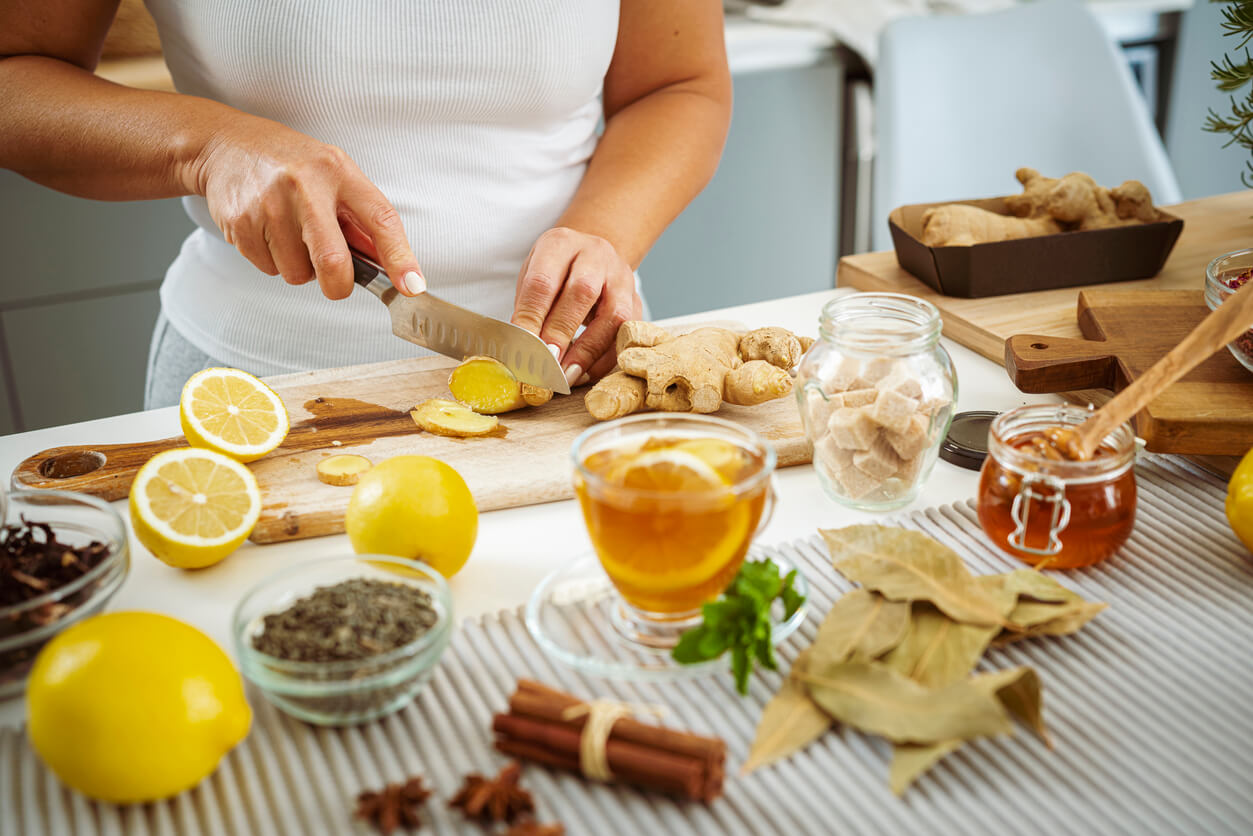
Herbs and spices are more than culinary enhancers. They’re also powerful allies in the fight against harmful, chronic inflammation. This win-win quality makes it fun and easy to add more and more herbs and spices to your cooking — and your body.
If you’re new to harnessing the power of these plant-based wonders in your kitchen, I recommend trying out a few new things and seeing what you like. Start by choosing one new anti-inflammatory spice to introduce into your cooking this week, exploring its unique benefits and delicious possibilities through the tips we’ve provided.
When you’re ready to deepen your culinary knowledge, FRN’s comprehensive guide to cooking with herbs and spices, both fresh and dried, offers further insights and inspiration.
You can find it here.
Ready to embrace this flavorful path to better health? Your body and your taste buds will thank you.
Editor’s Note: Many of the anti-inflammatory spices featured in this article are part of the Food Revolution Network Collection we curated with our friends at Burlap & Barrel. Each spice was hand-selected for its bold flavor, versatility, and potential to support vibrant health, especially when it comes to reducing inflammation with plant-powered foods.
Sourced directly from smallholder farmers using sustainable practices, every spice is single-origin, non-irradiated, and third-party tested for purity and safety. When you cook with these, you’re supporting your health and a more ethical, transparent food system. Click here to explore the collection and get a special discount.
If you make a purchase through that link, Burlap & Barrel will contribute a portion of the proceeds to Food Revolution Network’s mission. (Thank you!)



